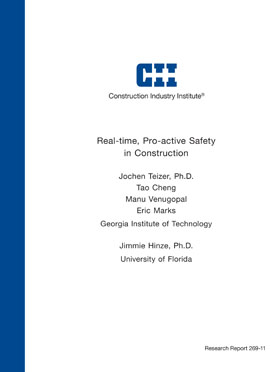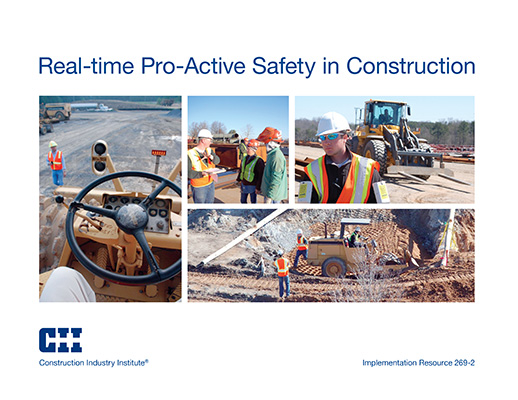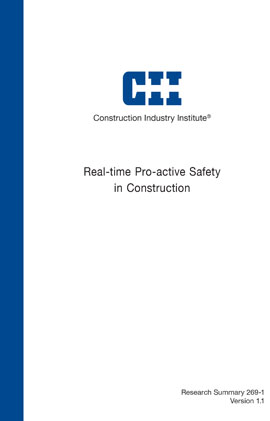
Real-Time, Pro-Active Safety in Construction
Every year for the last decade, nearly 1,200 construction workers have died in job-related accidents. That equates to approximately five construction worker deaths every working day in the United States alone. Of these fatalities, about 25% involved heavy equipment, most being categorized as struck-by incidents. As these statistics indicate, safety in construction remains a major problem. Despite the implementation of better safety practices, further improvements can be gained in construction safety through the use of technology.
This research has explored technology (electronic detection and alert devices, work site monitoring and data visualization technology) that can be effectively utilized on construction sites to pro-actively warn workers of imminent danger in real-time. Specifically, the research was designed to improve the ability of pedestrian workers and equipment operators to know when approaching a hazardous construction work zone area (proximity to machines, confined spaces, edges, etc.) and the ability to remotely activate a safe and portable warning signal when necessary. The research findings provided insights about tools that may be used to identify and visualize at-risk behaviors/conditions and record data to improve safety processes.
Recommendations were given on how such technology can be implemented in existing safety management plans. Key findings on future technological advancements and their potential use to promote worker safety were presented and can be summarized as: 1) project scope and complexity determine the level of technology use; 2) a spectrum of technology choices rather than a single or all-or-nothing alternative exists; 3) the selection and use of real-time, pro-active technology requires involvement of technology-literate project participants; 4) worker involvement early in the process is a key factor in successfully adopting technology; 5) successful implementation depends on overcoming a lack of industry awareness and knowledge of benefits and opportunities offered by real-time, pro-active safety technologies; 6) adequate testing and calibration of technology in site environments plays a critical role for successful site implementation; 7) investment in safety technology provides benefits beyond overall cost savings; and 8) pro-active real-time safety technology advances multiple project team levels, including work site organization and planning.
The Construction Industry Institute (CII) has been among the leading organizations focusing on improving construction safety and health. The ability to improve safety performance in construction has been proven in various studies conducted by the Construction Industry Institute (CII). Examples of existing CII publications include:
CII research summaries:
- 13-1, Managing Subcontractor Safety
- 32-1, Zero Injury Techniques
- 45-1, Improved Workers’ Compensation Management in Construction
- 101-1, Design for Safety
- 160-1, Safety Plus: Making Zero Accidents a Reality
- 190-1, The Owners’ Role in Construction Safety
- 216-1, Targeted Safety Programs
CII research reports:
- 45-11, Improved Workers’ Compensation Management in Construction
- 101-11, Design for Safety
- 160-11, Safety Plus: Making Zero Accidents a Reality
- 190-11, The Owners’ Role in Construction Safety
- 216-11, Targeted Safety Programs
CII source documents:
- 38 and 39, Subcontractor Safety as Influenced by General Contractors
- 67, Indirect Costs of Construction Accidents
- 86, Zero Accident Techniques
- 88, Construction Safety Self-Assessment Process
- 106, Evaluation of Owner-Contractor Relationships
Many of these safety-related studies have successfully contributed to reducing the incident rates over the past two and one half decades. However, these efforts have focused primarily on behavioral safety management and policy changes. Advances in real-time, pro-active safety technology have made it possible to integrate and leverage their potential in construction industry applications.



